-
21.Beatrix Potter
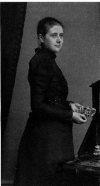
-
Beatrix Potter was famous for her characters including Peter Rabbit and Squirrel Nutkin but she was also a mycologist and scientific artist, who helped to protect and conserve the Lake District countryside.
-
22.Sir Bernard Katz

-
Sir Bernard Katz researched nerves and muscle, and in particular the physicochemical mechanism of neuromuscular transmission.
-
23.Bill Bowman

-
Bill Bowman was a beloved researcher, founding professor of pharmacology and a prominent leader in modern anaesthetics. His research on anaesthetic drugs led to the development of two of the most extensively used muscle relaxants we have today, vecuronium and rocuonium.
-
24.Dame Bridget Ogilvie

-
Bridget Ogilvie said her first stroke of luck was being born into a family who believed it was as important to educate girls as boys, an unusual attitude at the time. She grew up on a sheep farm in New South Wales and recalls how her father was told by the bank manager to spend his money on fertiliser rather than her education. Fortunately for science, her father disagreed.
-
25.Carl Djerassi
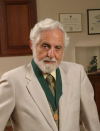
-
Carl Djerassi played a key role in the development of the birth control pill and antihistamines. The pill radically transformed women’s lives and is seen as a key milestone in social, as well as biomedical, history.
-
26.Carl Linnaeus

-
Carl Linnaeus developed a way to classify and name all the living things on earth, in a system known as taxonomy, and this system is still used by scientists today. Taxonomy is the science of identifying and naming living organisms such as plants, animals, bacteria and fungi. Linnaeus also identified ecology as a distinct area and was one of the first people to describe food chains.
-
27.Dr Carrington Bonsor Williams
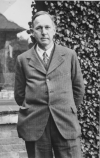
-
Carrington Bonsor Williams, more commonly known as CB Williams, was a leading statistical naturalist and a pioneer in measuring diversity related to ecological complexity. He was associated with insect migration, statistical ecology and biogeography.
-
28.Casey Wood
-
Casey Wood was an ophthalmologist, ornithologist, author, translator, editor and bibliophile. He researched defects of the eye and defective vision and his studies on the eyesight of birds increased our understanding of ophthalmology.
-
29.Celia Hunter
-
Celia Hunter was born in 1919 in Arlington, Washington. She grew up on a small family farm and this, along with her Quaker upbringing, gave her an appreciation of the natural world. She was also instilled with the importance of standing up for her values and following her dreams, even if it meant disregarding the traditional gender stereotypes of the time.
-
30.Charles Chamberlain Hurst

-
Charles Chamberlain Hurst was an English geneticist who was one of the early explorers of the science of genetics. Famous for his early investigations into plant hybridisation, the process of cross-pollinating different species of flora, and his study’s of eye colour inheritance. He was seen as one of the founding contributors to the scientific community’s acceptance of Mendelian’s theory of genetics in Britain. He lived from 1870-1947.
-
31.Charles Darwin
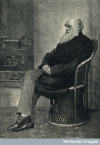
-
Darwin's father once told him he would be a disgrace to his family, instead he became one of the most influential biologist of all time. Charles Darwin’s theory of evolution by natural selection is now generally accepted and his legacy of scientific enquiry remains with us to this day.
-
32.Charles Elton
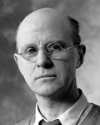
-
Charles Elton was a British biologist who is famous for framing the basic principles of modern animal ecology.
-
33.Charles Rothschild

-
Charles Rothschild was a man ahead of his time. He was born into the Rothschild dynasty and worked for the family bank. However, he was also a keen entomologist and passionate about natural history, and is credited with setting up the first nature reserve.
-
34.Sir Charles Scott Sherrington

-
Charles Scott Sherrington was a Nobel Prize winning British physiologist who contributed massively to our understanding of the nervous system, to such an extent the field of neurology might be unrecognisable without him.
-
35.Christiane Nusslein-Volhard

-
Christiane Nusslein-Volhard is an inspirational German geneticist and Nobel laureate who is well recognised for her contributions to our understanding of embryonic development. Her most significant and award winning work was her in-depth research into identifying the genes responsible for transforming single celled organism into complex organism, in the common fruit fly (Drosophila melanogaster).
-
36.Sir Colin Blakemore

-
Sir Colin Blakemore is a one of Britain’s leading neuroscientists. He has made ground-breaking research in vision and the development of the brain. In 2014 he was knighted, in recognition of his research and contribution to scientific policy and outreach.
-
37.Constance Leetham Terry
-
Constance Leetham Terry was one of the first women to be elected to The Physiological Society. The group of six women were elected on 3rd July 1915, making a huge step towards sexual equality and acknowledging women as equal in intelligence and academic rigour as men.
-
38.Cyril Dean Darlington
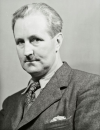
-
Cyril Dean Darlington was better known as CD. He was a controversial figure whose determination and persistence in the face of setbacks helped him become a leading figure in the world of genetics. He increased our understanding of chromosomes, meiosis and the centromere. Along with Ronald Fisher he founded the journal Heredity.
-
39.Sir David Attenborough
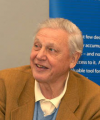
-
Sir David Attenborough is considered the father of natural history television.
-
40.Sir David Hopwood
-
Professor Sir David Hopwood, a British geneticist and microbiologist, carried out fundamental research into the genetics of the soil bacteria Streptomyces, an organism which gives rise to half the world’s antibiotics in use today.



